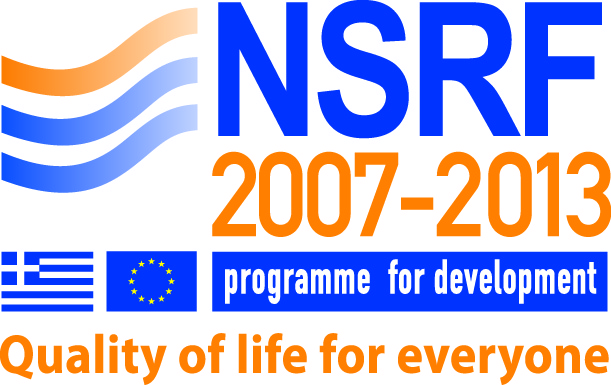Please use this identifier to cite or link to this item:
https://olympias.lib.uoi.gr/jspui/handle/teiep/12386Full metadata record
| DC Field | Value | Language |
|---|---|---|
| dc.contributor.author | Δημητρίου, Διαμάντης | el |
| dc.date.accessioned | 2021-03-29T10:38:01Z | - |
| dc.date.available | 2021-03-29T10:38:01Z | - |
| dc.date.issued | 2021-03-29 | - |
| dc.identifier.uri | https://olympias.lib.uoi.gr/jspui/handle/teiep/12386 | - |
| dc.rights | Αναφορά Δημιουργού-Μη Εμπορική Χρήση-Όχι Παράγωγα Έργα 3.0 Ελλάδα | * |
| dc.rights.uri | http://creativecommons.org/licenses/by-nc-nd/3.0/gr/ | * |
| dc.subject | Ελληνική μουσική | el |
| dc.subject | Αγγελόπουλος Μανώλης | el |
| dc.subject | Arabesk | el |
| dc.title | Το Arabesk στην Ελληνική λαϊκή μουσική. Η περίπτωση του Μανώλη Αγγελόπουλου στην δεκαετία του '70. | el |
| heal.type | bachelorThesis | - |
| heal.classification | Μουσική - Λαϊκή | el |
| heal.identifier.secondary | Πτυχιακή Εργασία | - |
| heal.dateAvailable | 2024-01-05T22:55:31Z | - |
| heal.language | el | - |
| heal.access | free | - |
| heal.recordProvider | Τ.Ε.Ι. Ηπείρου | el |
| heal.publicationDate | 2021-03-19 | - |
| heal.bibliographicCitation | Δημήτριος, Δ., 2021. Το Arabesk στην Ελληνική λαϊκή μουσική. Η περίπτωση του Μανώλη Αγγελόπουλου στην δεκαετία του '70. Πτυχιακή εργασία. Άρτα: Τ.Ε.Ι. Ηπείρου. Σχολή Καλλιτεχνικών Σπουδών. Τμήμα Λαϊκής & Παραδοσιακής Μουσικής. | el |
| heal.abstract | Στη συγκεκριμένη πτυχιακή εργασία αναλύονται κομμάτια του Μανώλη Αγγελόπουλου και διαφόρων Ινδών και Αράβων συνθετών, που εστιάζουν στο «arabesk» στοιχείο, τις δεκαετίες ΄70 – ΄80. Γίνεται αναφορά στην πολιτική, εκπαιδευτική και οικονομική κατάσταση που επικρατεί στην Ελλάδα κατά την εποχή εκείνη, καθώς και η αφομοίωση των ινδικών τεχνών και η οικειοποίηση τους από Έλληνες μουσικούς. Για την ανάλυση των κομματιών, χρησιμοποιήθηκαν οι εξής παράμετροι: δομή του τραγουδιού, ρυθμός και πορεία της μελωδικής ανάπτυξης. Επιπρόσθετα, αναφέρονται η βιογραφία του Μανώλη Αγγελόπουλου και η ενσωμάτωση του «arabesk» στοιχείου στην ελληνική δισκογραφία, μέσα από μία αναδρομή στο κοινωνικό πλαίσιο εκείνης της περιόδου. Σε αυτή την εργασία με βάση το θεωρητικό σκέλος αλλά και την μουσικολογική ανάλυση, απαντάμε σε κάποια ερωτήματα που θέσαμε εξ’ αρχής, τα οποία είναι: α) πως μεταφέρθηκε το «arabesk» στην ελληνική λαϊκή μουσική, β) από που επηρεάστηκε ο Μανώλης Αγγελόπουλος, γ) ποια είναι τα χαρακτηριστικά του «arabesk» μέσα στα κομμάτια. | el |
| heal.abstract | This thesis analyzes pieces by Manolis Aggelopoulos and various Indian and Arab composers focusing on the ‘arabesk’ element in the 70s and 80s. There is a reference to political and economical circumstances existing on Greece at the time. As well the absorption of Indian arts and the appropriation of them from Greek musicians. The below parameters: structure of the song, rhythm and course of the melodic development were used for the analysis of the pieces. Development in addition, the biography of Manolis Aggelopoulos and the incorporation of the ‘arabesk’ element into the Greek discography are mentioned, through a retrospective of the social context of that period. In the thesis based on both theoretical and musicological analysis, we answer some of the questions that we raised from the beginning, which are: a) how was arabesk transferred to Greek folk music, b) how was Manolis Aggelopoulos influenced, c) what are the characteristics of the ‘arabesk’ in the pieces. | el |
| heal.advisorName | Κοκκώνης, Γεώργιος | el |
| heal.committeeMemberName | Ορδουλίδης, Νικόλαος | el |
| heal.committeeMemberName | Κούνας, Σπήλιος | el |
| heal.academicPublisher | Τ.Ε.Ι. Ηπείρου, Σχολή Καλλιτεχνικών Σπουδών, Τμήμα Λαϊκής & Παραδοσιακής Μουσικής | el |
| heal.academicPublisherID | teiep | - |
| heal.numberOfPages | 69 | - |
| heal.fullTextAvailability | false | - |
| Appears in Collections: | Προπτυχιακές εργασίες Τμ. Λαϊκής & Παραδοσιακής Μουσικής | |
Files in This Item:
There are no files associated with this item.
This item is licensed under a Creative Commons License





